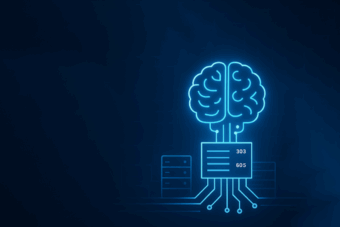In today’s interconnected world, understanding supply chain intricacies is more critical than ever. With changing demands, increased regulatory requirements, geopolitical developments, and a diverse array of information sources, businesses face challenges in efficiently and effectively managing their supply chains. Knowledge graph technology presents a game-changing solution to provide critical supplier intelligence.
Use Cases of Knowledge Graphs in Supply Chain
- Supplier Insights: Businesses must stay updated about their suppliers comprehensively, assessing them on various metrics like capabilities, reliability, and risk, ensuring better, timely decision-making.
- ESG Reporting: With regulations like the Corporate Social Responsibility Directive (CSRD) and the Supply Chain Law in the European Union, there’s an increased emphasis on responsible business operations. Manufacturers must provide a consolidated view of various environmental, social, and governance (ESG) metrics. It will be essential to streamline reporting to maintain efficiency and comprehensiveness.
- Supplier Discovery: As demands shift and strategies evolve, it’s crucial to identify new potential suppliers.
- Multi-Tier Supply Chain Understanding: Sourcing strategists benefit from a deeper understanding of their supply chain such as identifying bottlenecks and alternatives or tracing back raw materials, intermediate products, and final assembly across multi-tier levels.
Building an Effective Solution with AI-powered Knowledge Graphs
While information is abundant from sources like these, merging supplier data from varied sources is daunting. ESG reporting only compounds this challenge.
- First-Hand Supplier Data: Start by aggregating direct information from suppliers, managed via in-house sourcing systems.
- Third-Party Data Integration: Integrate data from reliable third-party sources like company registers, D&B, and S&P Global (Capital IQ, IHS).
- ESG Data Acquisition: Gather ESG data directly from suppliers and platforms such as Sustainalytics and ESG Book.
- Unstructured Data Utilization: Process qualitative, unstructured data to detect relevant events and patterns from news and filings.
- Event Data Stream Monitoring: Stay updated with real-time event data streams for weather events, traffic, and more, ensuring timely responses.
Converging internal and external, structured and unstructured data enables supply chain organizations to gain more comprehensive supplier intelligence and spot relevant events and opportunities more timely.
While Knowledge Graph technology provides a foundation to create a consistent, multi-faceted representation of supply chain data, Artificial Intelligence holds the key to mapping, blending, and consolidating the information from those diverse sources efficiently and at scale.
Though keen on adopting graph technology, automotive and manufacturing companies grapple with decisions on whether to develop in-house solutions or outsource and how to maintain system performance, keep data up-to-date, and ensure consistency.
Case Study
Enhancing Supply Chain Monitoring with AI and Knowledge Graphs
In the intricate web of global automobile manufacturing, being ahead of the curve can make the difference between smooth operations and expensive disruptions. Recognizing the need for a more sophisticated system to monitor its vast supplier network, a top-tier global car manufacturer, with more than 100,000 suppliers globally, teamed up with CID.
The Advantage Gap
While knowledge graph technology holds immense promise, a distinct ‘Advantage Gap’ exists. This gap pertains to the disparity between available graph technology, the nuances of data sources, and the intricacies of business logic. Bridging this gap is essential for realizing the full potential of knowledge graphs in supply chain management.
With the right approach and expert guidance, businesses can transform their supply chain operations, ensuring resilience, compliance, and growth in today’s dynamic market.
CID’s team of Advantage Engineers is at the forefront of helping automotive and manufacturing businesses bridge the ‘Advantage Gap.’ With their expertise in Knowledge Graphs and Artificial Intelligence, these companies can unlock the latent power of their supply chain data, driving efficiencies and fostering informed decision-making.






